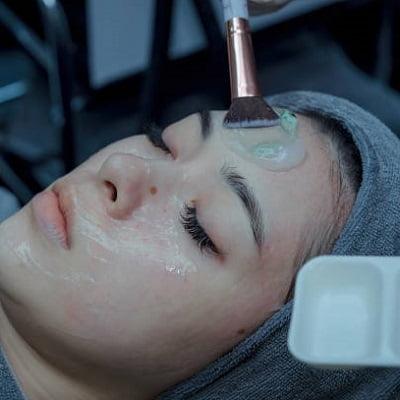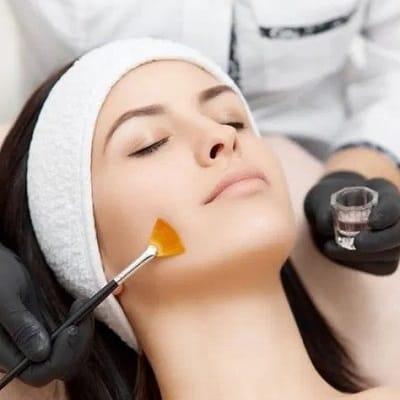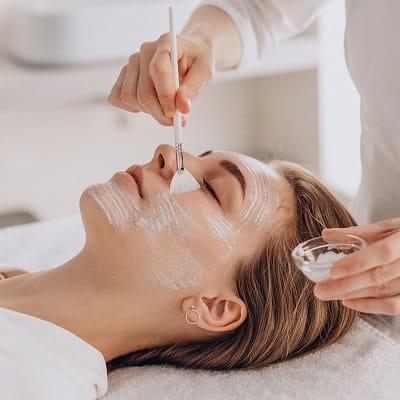In the quest for radiant and youthful skin, chemical peel in islamabad have emerged as a popular and effective treatment. These peels are designed to exfoliate the skin, revealing fresher, smoother, and more even-toned skin underneath. However, with various types of chemical peels available in the market, choosing the right one for your specific skin type can be a daunting task.
In this blog, we will explore the different types of chemical peels and help you understand how to select the most suitable one to achieve the best results and avoid potential risks.
All about Chemical Peels:
Chemical peels are cosmetic treatments that involve applying a chemical solution to the skin, which causes the top layers to slough off. This process helps in stimulating collagen production, reducing fine lines, treating acne, improving skin texture, and fading hyperpigmentation. There are three main types of chemical peels classified based on their depth of penetration:
Superficial Peels:
Superficial peels are the mildest type of chemical peels and primarily target the outermost layer of the skin, the epidermis. These peels are generally gentle, with little to no downtime, making them suitable for most skin types, including sensitive skin. They are effective in treating minor skin issues such as discolouration, rough texture, and fine lines.
The most common ingredients found in superficial peels are alpha hydroxy acids (AHAs) like glycolic acid and lactic acid, as well as beta hydroxy acids (BHAs) like salicylic acid. These acids work by loosening the bonds between dead skin cells, allowing them to shed off easily.
Medium Peels:
Medium peels penetrate deeper into the skin, targeting both the epidermis and the upper layer of the dermis. They are more effective in treating moderate skin concerns, including deeper wrinkles, acne scars, and uneven pigmentation. However, medium peels also entail a longer recovery period, and individuals may experience redness and peel for several days to a week after treatment.
Deep Peels:
Deep peels are the most potent and invasive type of chemical peel. They target the deeper layers of the dermis to address severe skin problems such as deep wrinkles, extensive sun damage, and pronounced acne scars. Phenol is the primary active ingredient in deep peels.
Due to their aggressive nature, deep peels require careful consideration and are typically performed under anaesthesia by a trained dermatologist or plastic surgeon.
Identifying Your Skin Type:
Before deciding on a chemical peel, it is crucial to determine your skin type, as this will guide you in selecting the appropriate treatment. Here are the common skin types:
- Normal Skin: Characterized by a balanced level of oil production and few blemishes, normal skin has an even tone and a smooth texture.
- Dry Skin: Dry skin often feels tight, flaky, and rough. It lacks moisture and may have fine lines and red patches.
- Oily Skin: it appears shiny and is prone to acne and enlarged pores due to excess sebum production.
- Combination Skin: it is a mix of different skin types, with some areas being oily (usually the T-zone) and others being normal or dry.
- Sensitive Skin: it is easily irritated and may react negatively to certain products or environmental factors.
Selecting the Right Chemical Peel for Your Skin Type:
Once you have identified your skin type, it’s time to choose the appropriate chemical peel:
For Normal to Dry Skin:
Superficial peels with AHAs like glycolic acid or lactic acid are generally safe and effective for normal to dry skin. These peels exfoliate gently and promote hydration, helping to improve the skin’s texture and radiance. They are particularly suitable for individuals with minor skin concerns and those seeking a preventative anti-ageing treatment.
For Oily Skin:
Superficial peels with BHAs like salicylic acid are excellent for oily skin types. BHAscano penetrates pores and dissolves excess sebum, making them effective in treating acne and controlling oil production. Additionally, mandelic acid, a milder AHA, can also be a good option for oily skin as it offers exfoliation without causing excessive dryness.
For Combination Skin:
Individuals with combination skin may benefit from a combination of superficial peels, targeting specific areas accordingly. For instance, a mild AHA peel could be used on dry areas, while a BHA peel could be applied to oily zones.
For Sensitive Skin:
Sensitive skin requires extra care and caution when selecting a chemical peel. Mild superficial peels with lower acid concentrations, such as lactic acid, can be better tolerated by sensitive skin types. It’s essential to do a patch test beforehand and consult with a dermatologist to determine the safest treatment.
The Bottom Line!
Choosing the right chemical peel for your skin type is crucial to achieving the desired results while minimizing potential side effects. Always consult with a qualified skincare professional or dermatologist at Enfield Royal Clinics islamabad to assess your skin’s specific needs and determine the most suitable chemical peel. With the right chemical peel and professional guidance, you can unlock the potential of radiant, rejuvenated skin that leaves you feeling confident and beautiful.






Leave a Reply